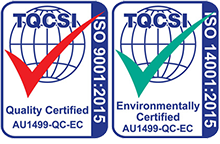Bottle Decoration
With shelves full of wine bottles using square paper labels, winemakers and marketers are moving toward the clear point-of-difference that direct printed bottles offer.
Combine this with the premium cues that consumers associate with prestige products and the advantages of screen printing is obvious. Cutler has the finest quality print machines available and we take advantage of our manufacturing efficiencies to ensure the most competitive pricing for printed bottles.
Screen Printed Wine Bottles
Screen Printed Wine Bottles (also known as ACL, Direct Printed Bottles or Decorated Bottles) offer a significant point of difference in wine packaging.
Direct print has those premium cues that consumers associate with luxury products.
Contrary to popular misconceptions, screen printed bottles can provide savings depending on the configuration of the package.
Ultra low volumes are often much more economical than tooling up for a short run of labels. While larger volume runs benefit from the high speeds bottling lines can run at with screen printed bottles and no roll changes.
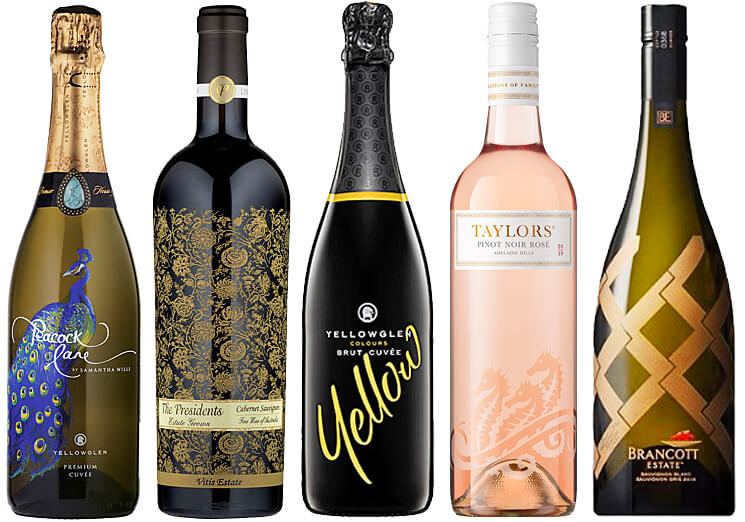
Shrink Sleeving
A shrink sleeve label consists of heat-sensitive material that is seamed with openings on the top and bottom to create a ‘sleeve’. The sleeve is placed around the product to which it will be applied. Once heat is applied to the material, the sleeve will begin to shrink or compress to the product..
Shrink sleeves are generated by reverse printing the artwork, to ensure the inks are safely behind the clear film. Creating customer assurance that their graphics won’t be scuffed or torn throughout transport. For the shrinking process to work correctly, the artwork design will be distorted for printing onto the sleeve material. Once that sleeve is placed onto the bottle, heat will then change the design to work as intended.
In addition to this, shrink sleeves conforms to any angle, curve or unique shaped bottle. Furthermore, with this technology this allows full, labelled bottles to be sleeved without any damage to the inside contents and creates zero condensation.
Shrink sleeves are also fade-resistant, the appearance is not compromised when encountered with moisture or friction.
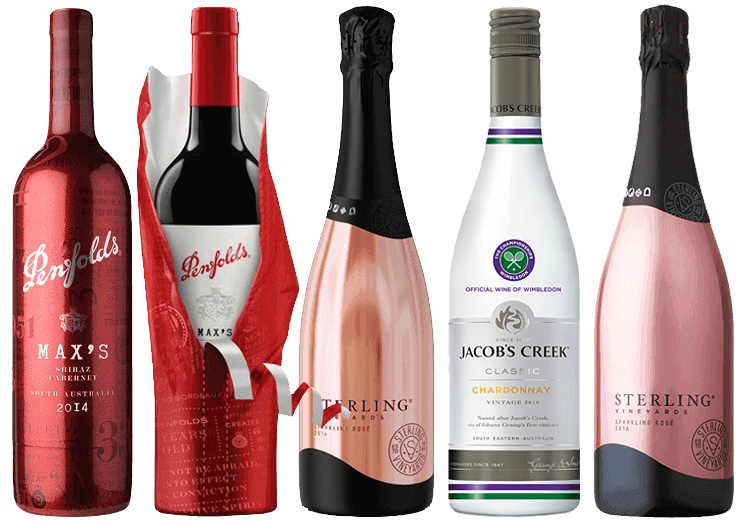
For small producer tailored solutions, please contact us on (08) 8268 9888
Screen Printed Bottles vs Clear Labels
Screen printed bottles offer many advantages over clear labels. In fact, clear labels were created to imitate the look of a screen printed bottle. While clear labels can look similar to screen printing from a distance, they are unable to compete with the inherent capabilities of a quality, screen printed package.
Advantages of quality, screen printed bottles:
- 360 degree print area capable of showcasing fully integrated designs
- Permanent branding. Your brand will remain on the bottle for the life of the bottle.
- No unsightly air pockets, bubbles or wrinkles that detract from the quality of the design.
- Ice bucket proof, perfect for sparkling and white wines.
- Cellar proof and scuff proof, perfect for red wines.
- Cost savings at bottling as you are running cleanskins that need no labels. The bottle line can run at full speed until the tanks are empty providing efficiency gains.
- No charge for the back label, front and back is one print.
- No backing paper or waste to be disposed of like plastic labels.
- Much higher print relief giving a premium, tactile effect that clear labels can’t match.
- Fully recyclable glass based inks.
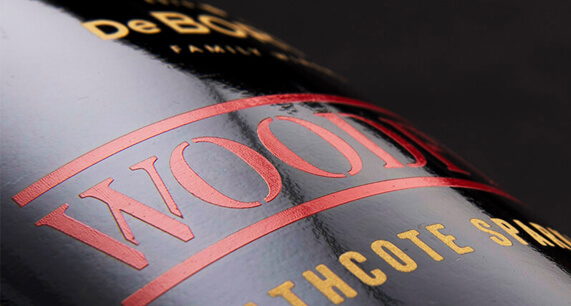
High quality screen printed bottle

Clear label quality issues
Thermal v Air-Cured Comparison
SCREEN PRINT ON BOTTLES RUBBING OFF?
It shouldn’t be … Not all screen printed bottles are created equal.
Thermal Inks (MFT Baked) verses Air-Cured inks (GL) on Screen Printed Bottles
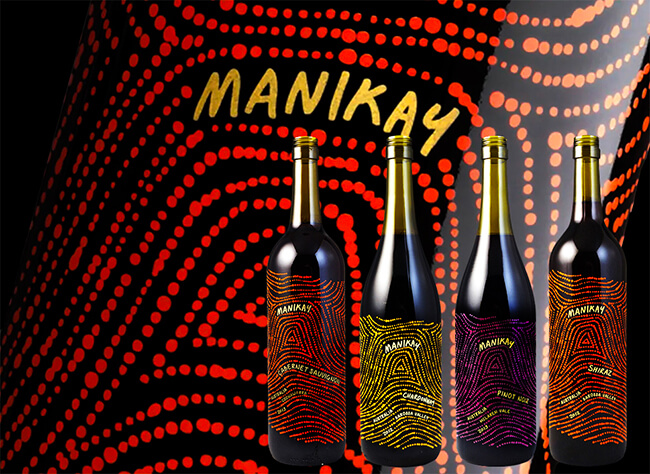
Thermal ink labels
From a consumer perspective, packaging has a powerful influence on purchasing decisions – the first sale is the label, the second is the product inside, therefore it’s important that the bottle decoration creates the best first impression.
Most bottles used in the beverage industry have protective treatment added to their surface which provides protection to the raw glass on the bottling line and during transportation. Referred to as a cold-end coating, as it’s applied at the end of the manufacturing process, it is this Duracoat that forms a protective layer on the container.
When a screen print image is printed onto the bottle surface, the ink system used determines how the image is held in place. Thermal inks (MFT) penetrate the protective bottle coating and bond directly with the glass becoming one with the bottle. This happens during the baking process and at the end of it, the protective coating is reapplied over the printed label and bottle once again. Air-Cured inks (GL) are printed at room temperature and bond with the protective coating covering the bottle, not the bottle itself.
Both ink systems are high-quality and capable of performing their appropriate roles in the market.
The pros and cons of the two screen printing processes – and when they should be considered.
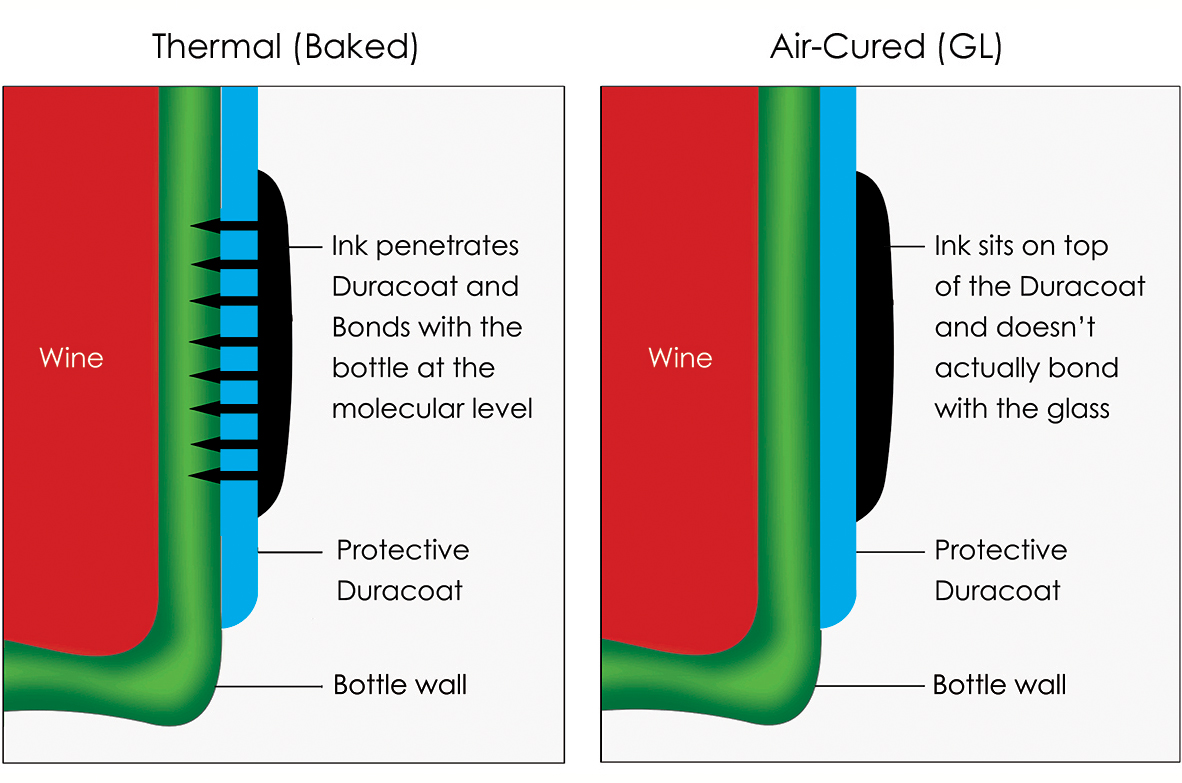
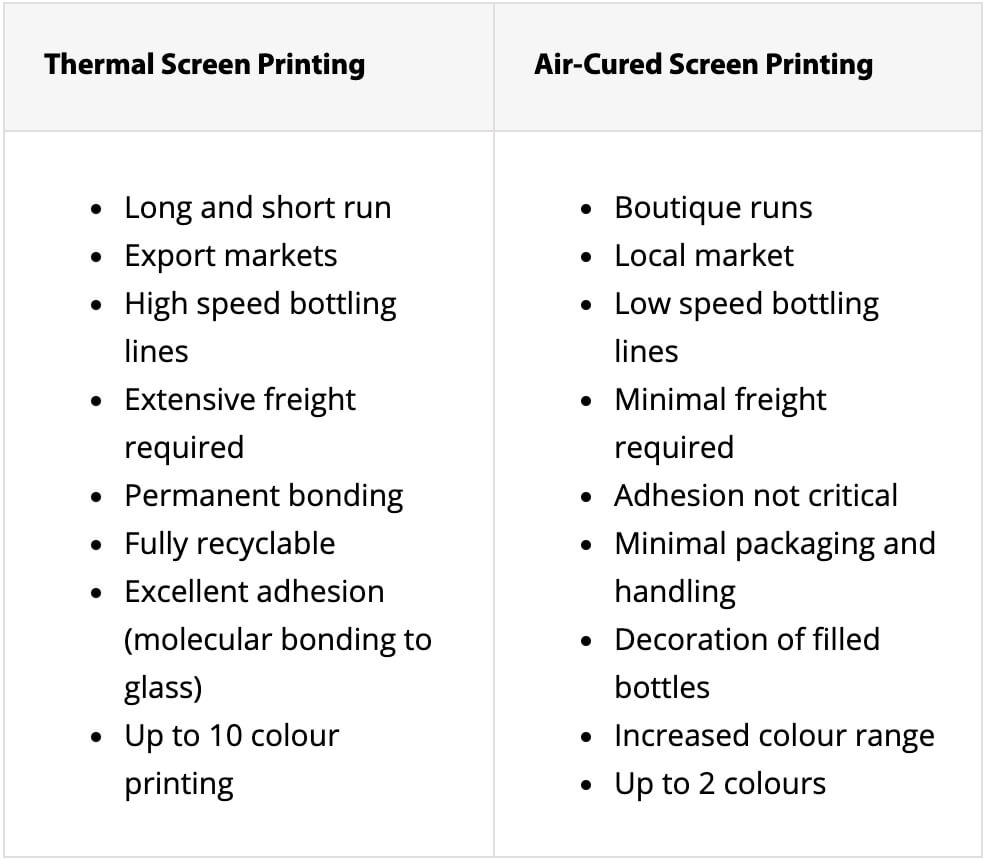
SUMMARY
The Thermal print process is recommended for both long and short runs on high-speed or boutique bottling lines, where label adhesion and integrity is critical, eg. export markets where extensive freight is required. Thermal inks can only be used on empty glass bottles before filling.
The Air-Cured print process is recommended on wine bottles that have already been filled and for short runs where bottles are hand packed or individually wrapped. It is not recommended for empty bottle export or where long-haul freight is involved.
Laser Etching
WHAT IS LASER ETCHING?
The patented laser source stands for reliability, high quality and longevity. The resonator body where the laser radiation is produced is made of 100% ceramic. Ceramic laser sources outperform alternative sources, like metal and glass.
Laser Etching is a Subtractive Manufacturing method, that uses a laser beam to change the surface of an object. This process is mostly used to create images on the material, that may be seen at eye level. To do so, the laser creates high heat that will vaporise the matter, thus exposing cavities that will form the final image. It is using the laser for marking the surface of an item.
This method is quick, completing a bottle etch 2 minutes at a time. The material is removed with each pulse of the laser. The depth of the marks is controlled by the number of times the laser beam is passing on the material.
During the process of laser etching onto a bottle, the rotary attachment within the machine spins the bottle as it is etched, guaranteeing each etch is consistent.
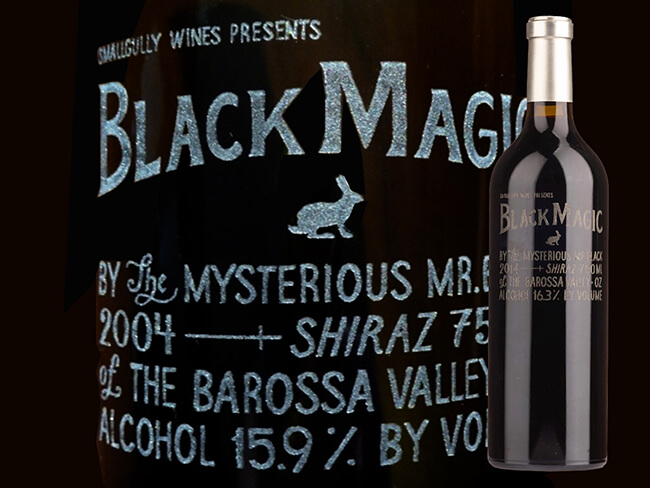
Laser etching onto a bottle created many benefits; as this process isn’t a printing process this means the artwork will not rub off at any point in time. Not only this, the laser etch creates a unique aesthetic to the bottle that will intrigue the desired demographic and target audience, getting you bottle seen!


